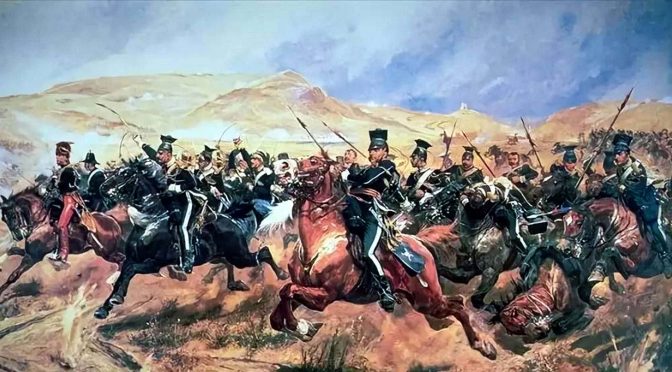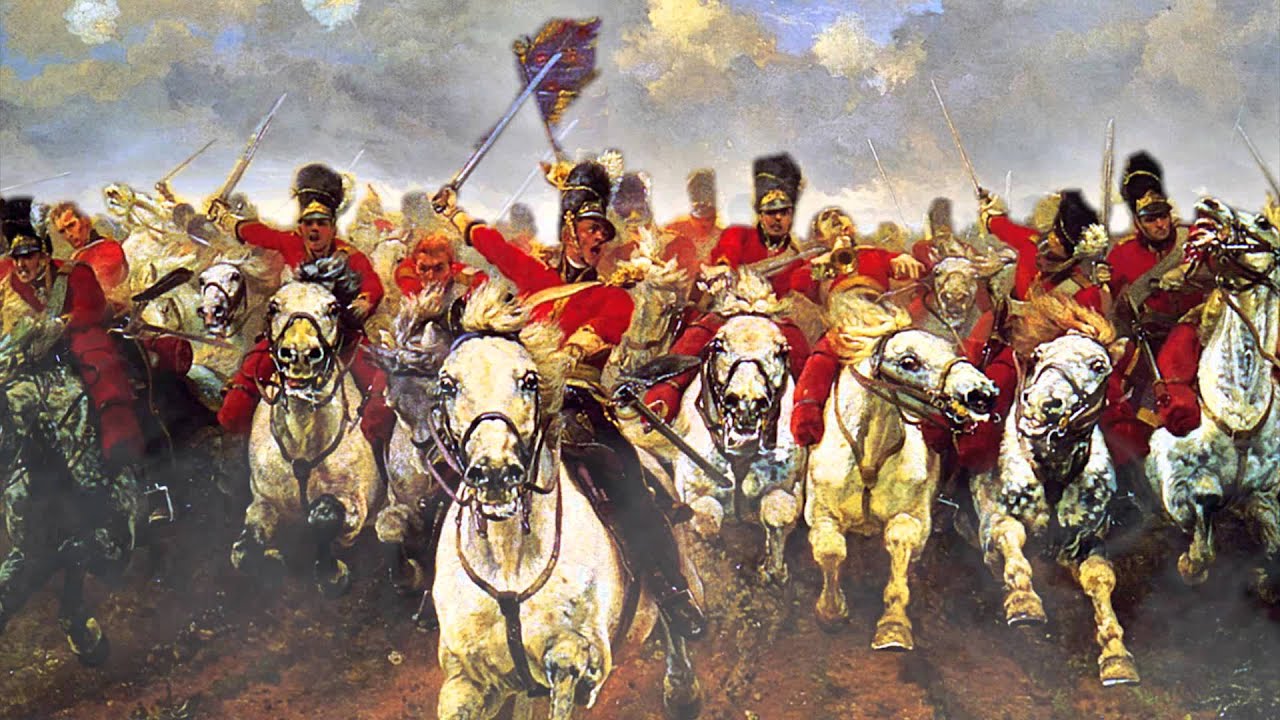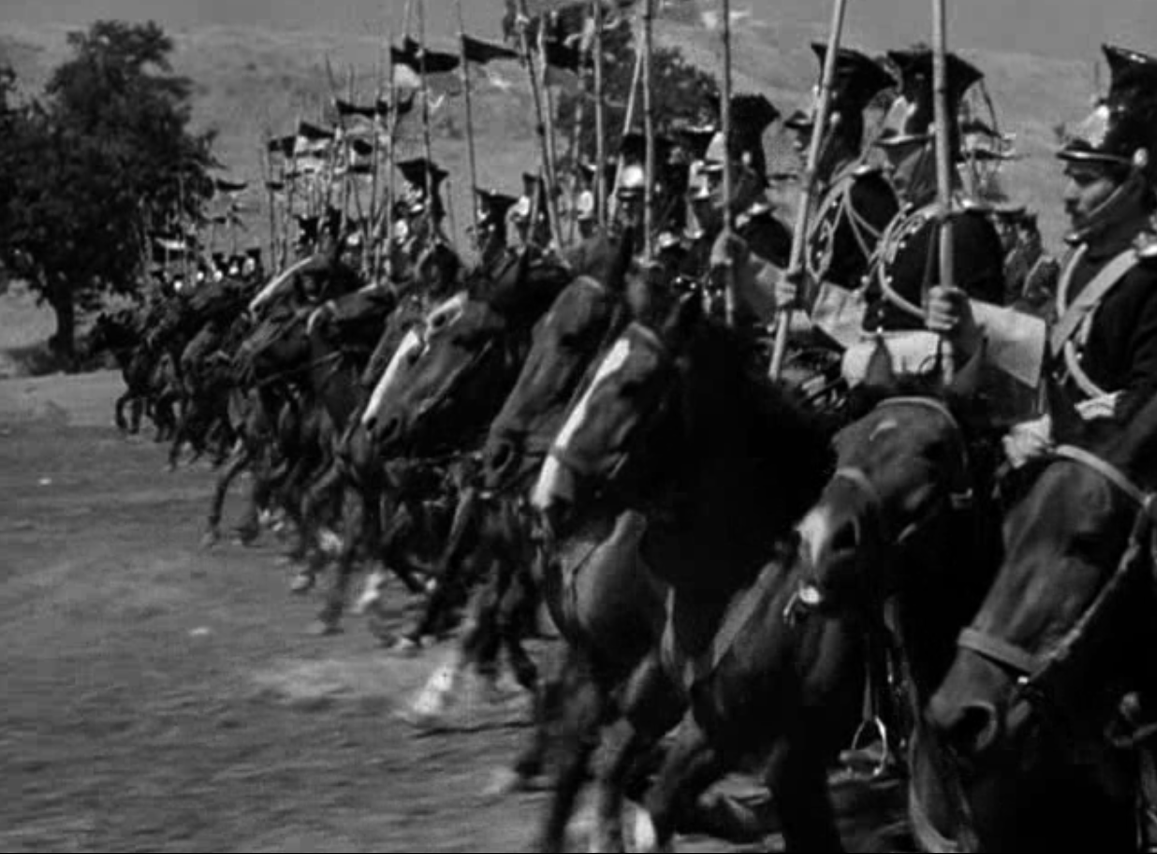In the Web circles in which I cyber-travel, there is much discussion of Western civilization and legacy of Western culture. Also lamentations that it’s being lost.
My focus here is on one artifact of that disappearing legacy/culture.
American kids used to be exposed to Tennyson’s famous poem. You find references to it in hundreds or thousands of other creative work. It was through one such reference that I first learned of the existence of this poem.
Almost nobody in today’s government schools is introducing kids to this poem. In fact, there are certainly millions of adults in America who have never learned about it, or understand what references to it are still made.
(I in this clip, at about 0:24, the REMF* interpreter paraphrases part of “Charge of the Light Brigade.” Just as myself and probably millions of other veterans have.)
To put the narrative of this poem in context, we must know a little about the circumstances of a battle during the Crimean War:
25 October, 1854; the siege of Sevastopol. Lord Raglan is the C.O. (commanding officer). The Russians are conducting a counterattack outside Balaclava, and capture British cannons. Raglan spots them running off with his artillery and wants to prevent this loss.
Raglan decides to send his Light Brigade after the Ruskies and get his field guns back. The Light Brigade is so-named because it is about a 600-man unit of light cavalry, which at this point in history meant the horses bore no armor (in contrast to the Heavy Brigade). The troopers carried sabers and light lances that were more like spears. Such units were quick and agile.
So far, so good. This is a sound, reasonable allocation of military resources to rebound from a setback. Raglan composes a message to his cavalry commander that says, basically, “Send the Light Brigade after those Ruskies stealing our cannons, and bring the guns back!”
Within his order was a careless neglect of specific detail that would make this a tragic day. From where Raglan surveyed the battle space, it was obvious which Ruskies he was referring to. But the cavalry commander didn’t see what Raglan saw, from his position.
The message filtered down to Brigadier General Brudinell (the Earl of Cardigan or, simply, “Cardigan”), Commander of the Light Brigade. What Ruskies does Lord Raglan have in mind, he asks. The messenger waved toward the east. Attack, now, sez he.
Not that the cavalry knew, but the enemy was carrying off British field guns to the south, hidden by the terrain from their position. What lay to the east was something else entirely.
I’m sure Cardigan lost all color in his face.
“Those cannons???” he must have wanted to ask.
In the direction the dispatch rider waved was an enormous Russian formation dug in on the high ground behind numerous artillery batteries on three sides. The valley they commanded was covered by a triangular crossfire. If any British, French, or Turkish unit was foolish enough to enter that valley, they would find themselves, in modern military parlance, inside a “kill box.”
The valley was a deathtrap. This was a suicide mission.
The Valley of Death.
The officers and men were obligated to take the orders at face value. They didn’t know the orders were based on a “blunder” of omission. I guarantee you, every cavalryman, from the C.O. down to the lowest enlisted man, was severely “dismayed” by the insane orders.
What followed was an age-old conundrum for a soldier.
A soldier has to obey the orders of the officers over him. Even when the orders make no sense. Even when the orders are crazy, idiotic, or suicidal. The officers have maps, and good vantage points, and knowledge that the common soldier doesn’t. Most of the time, orders that don’t make sense to a soldier at the time will make sense later, from a strategic perspective, and prove necessary for accomplishing a mission. Some orders are, indeed, insane, and result in needless slaughter. But the common soldier usually doesn’t know which order is which. He must trust in his chain-of-command, and follow orders regardless.
It would be difficult-to-impossible to win wars without soldiers who will follow orders like those British cavalry troopers did.
Theirs was not to make reply. (Sir, this is suicidal! You’re sending us to our doom for no good reason!”)
Theirs was not to reason why. (“Why the bloody cack are we riding right into the mouth of hell, into the jaws of death? What purpose could this possibly serve? If we are to capture those cannons, send us in from behind, in the dark of night. And even then, with the advantage of surprise, it would be a forlorn hope!”)
Theirs was but to do and die. (Their job was to carry out their orders, even when it guaranteed their death.)
Boldly they rode, and well, while under murderous fire from the front and both flanks. As they grew closer to the enemy line, Russian gunners switched out the artillery shells for “shot.” That’s short for “grapeshot.” By this time grapeshot was more sophisticated, and starting to be called “cannister.” In effect, the smoothbore cannons were firing something like shotgun blasts into both “horse and hero,” with pellets the size of musket balls.
But once the survivors had broken through the line, Cossacks rode upon them. The troopers had to fall back through the Valley of Death, with the Russian artillery shredding them from both flanks and the rear. It was a bloodbath.
There’s a lot that can be said about that engagement. Tennyson concentrated on the honor of the steadfast troopers who rode knowingly into the Mouth of Hell. It was courageous, glorious, as he saw it. A cynic might be tempted to dismiss it as a foolish catastrophe. Were they fools for following orders that day? Not for me to judge. But nobody can question their loyalty, their commitment to their duty, or their mettle.
One more thought: to preserve the stamina of their horses, the cavalry could not maintain a charge at a full gallop over long distances. They advanced at a walk, while already under fire. After half a league (a league is about 3 1/2 miles) they adjusted the pace to a trot. Later they accelerated to a lope or canter. Finally, a sprint. When read the right way, this poem’s cadence approximates the changing pace of the brigade riding into the Jaws of Death.
I’ll let Tennyson take it from here:
IHalf a league, half a league,Half a league onward,All in the valley of DeathRode the six hundred.“Forward, the Light Brigade!Charge for the guns!” he said.Into the valley of DeathRode the six hundred.II“Forward, the Light Brigade!”Was there a man dismayed?Not though the soldier knewSomeone had blundered.Theirs not to make reply,Theirs not to reason why,Theirs but to do and die.Into the valley of DeathRode the six hundred.IIICannon to right of them,Cannon to left of them,Cannon in front of themVolleyed and thundered;Stormed at with shot and shell,Boldly they rode and well,Into the jaws of Death,Into the mouth of hellRode the six hundred.
IVFlashed all their sabres bare,Flashed as they turned in airSabring the gunners there,Charging an army, whileAll the world wondered.Plunged in the battery-smokeRight through the line they broke;Cossack and RussianReeled from the sabre strokeShattered and sundered.Then they rode back, but notNot the six hundred.VCannon to right of them,Cannon to left of them,Cannon behind themVolleyed and thundered;Stormed at with shot and shell,While horse and hero fell.They that had fought so wellCame through the jaws of Death,Back from the mouth of hell,All that was left of them,Left of six hundred.VIWhen can their glory fade?O the wild charge they made!All the world wondered.Honour the charge they made!Honour the Light Brigade,Noble six hundred!
This is my way of honoring the noble 600 and the charge they made, Alfred.
* “Rear Echelon Mo-Fo,” AKA “clerks & jerks.” The corporal is literally a clerk-typist, assigned to a squad of Rangers for the mission that this movie is about.




History must be preserved for next generations to come. Thank you for yet another great article!
Thanks, Gio. That poem has the guts, heroism, overwhelming odds, and gravitas that storytellers are still trying to inject in their work. Including movies like Saving Private Ryan. I appreciate it more now than I did when I first read it.
Heroism for the ages! Thank you so much for sharing this. We need stirring stories of courage if we are to rekindle the flame.